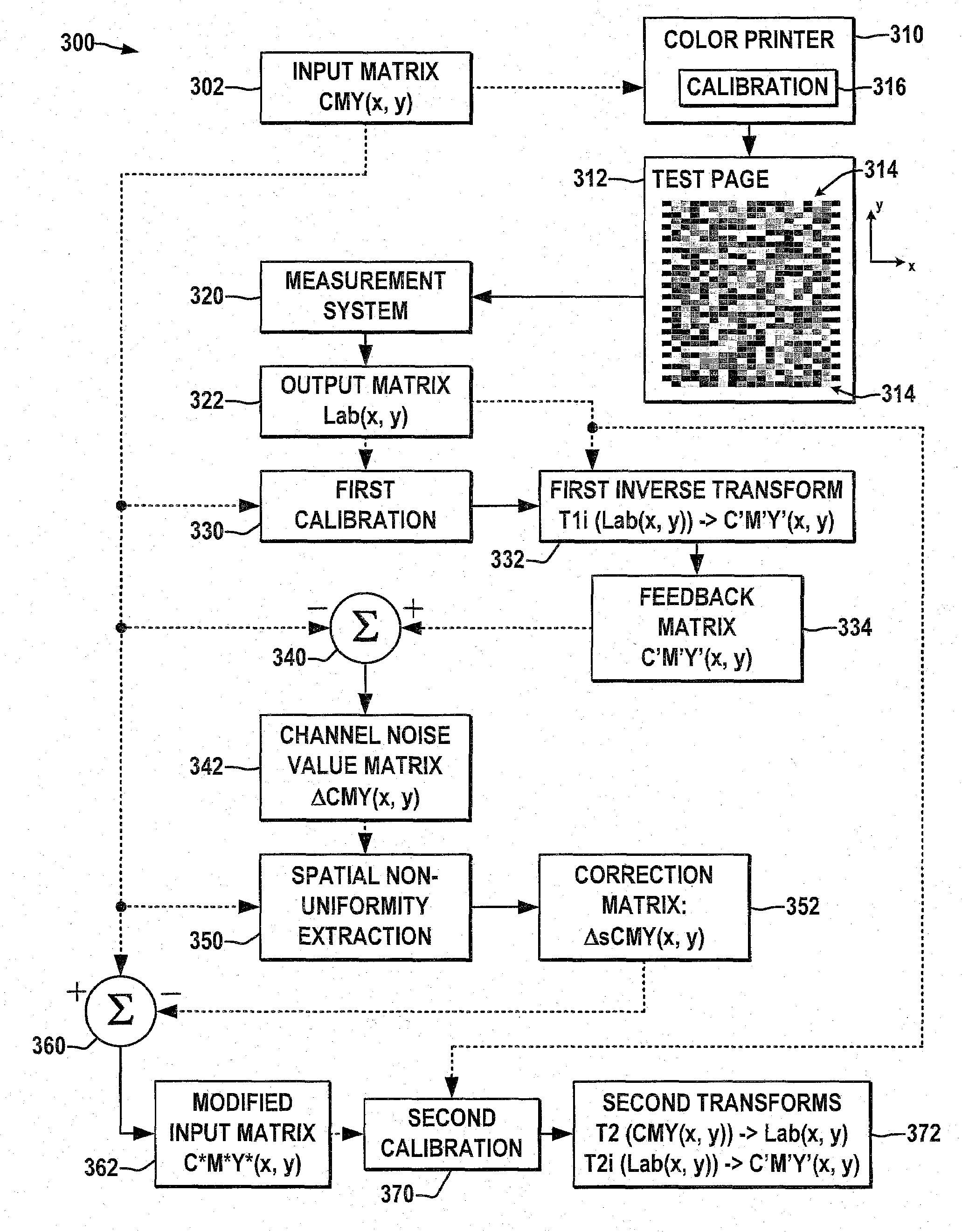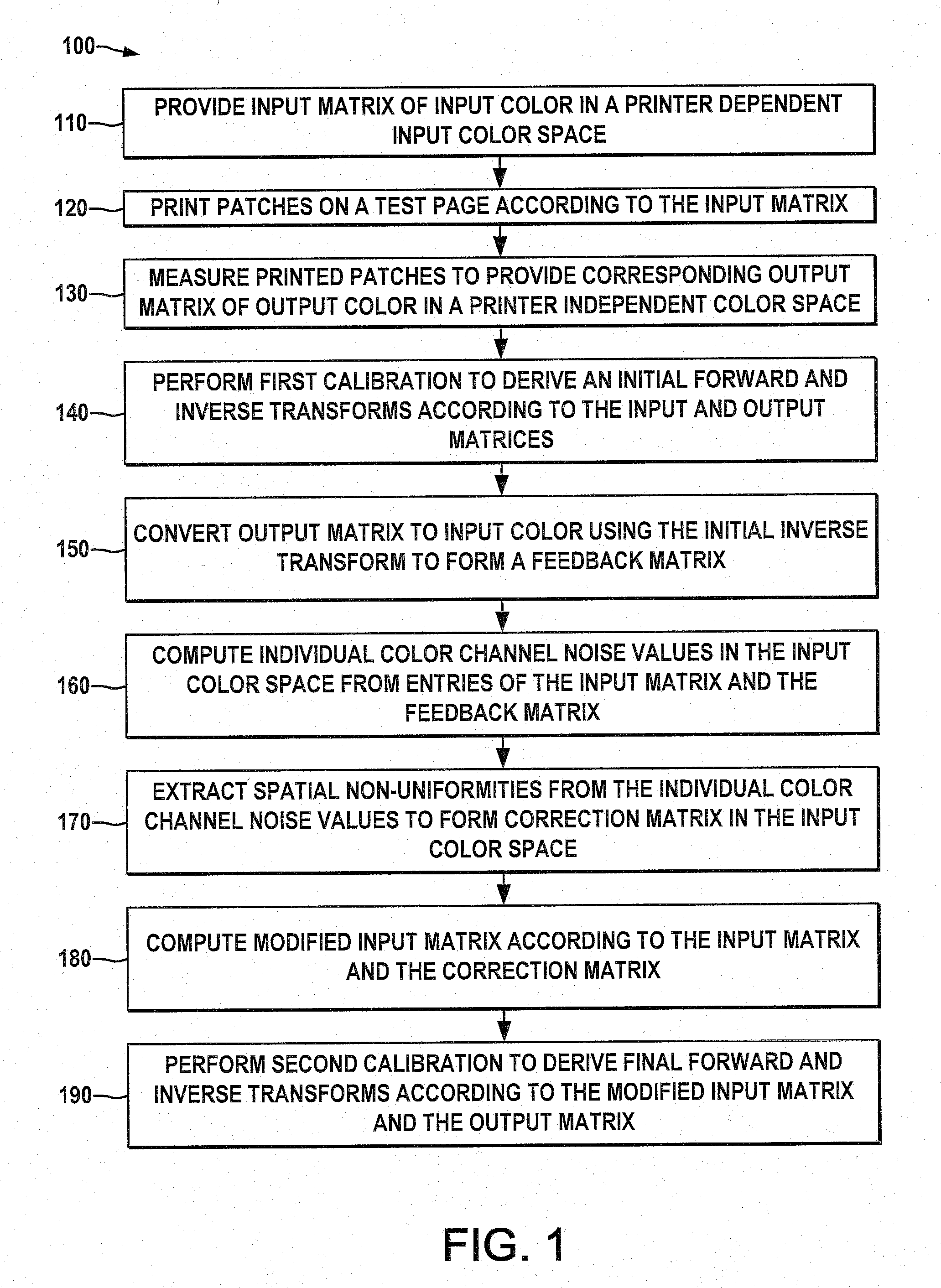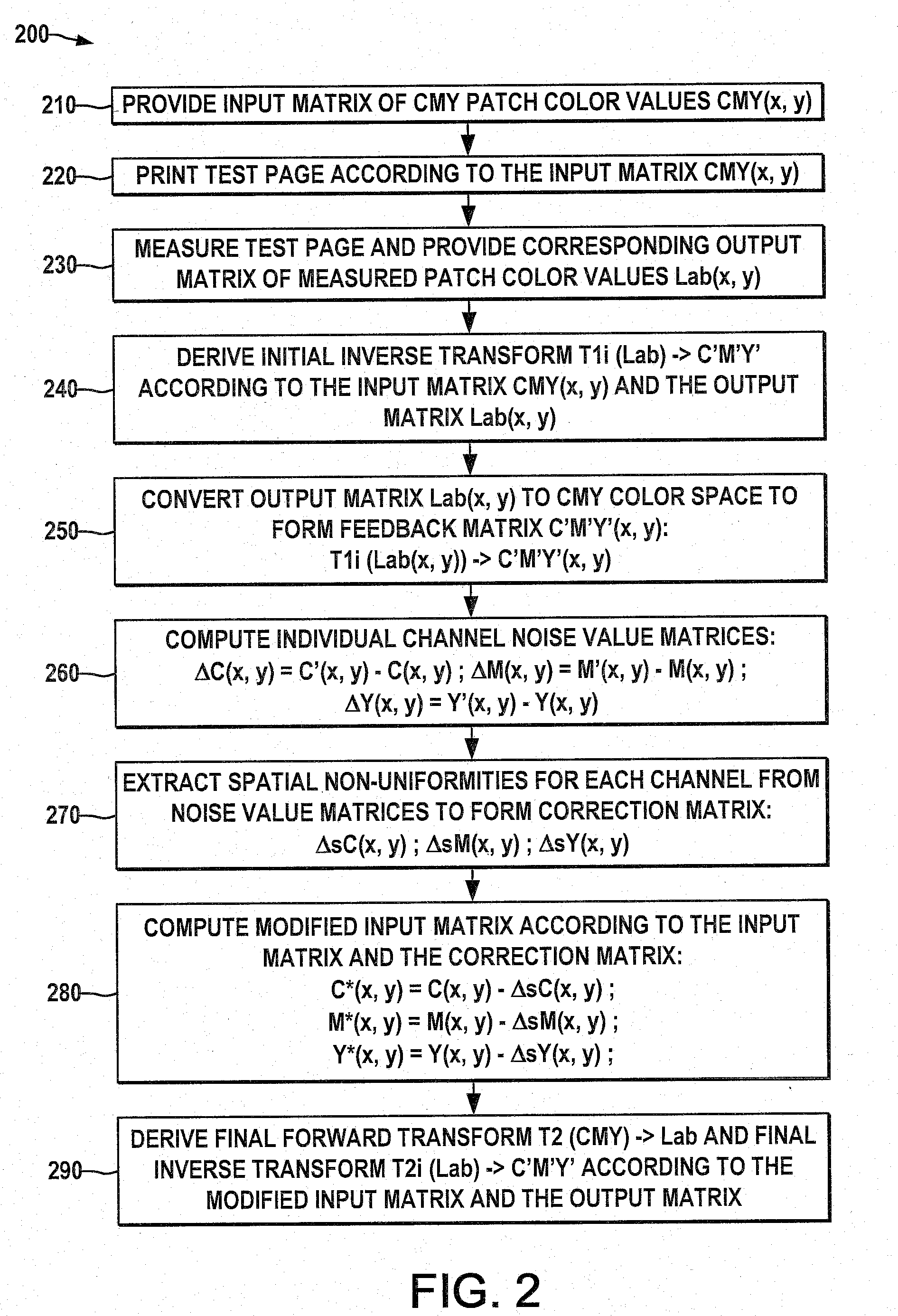Color printer characterization or calibration to correct for spatial non-uniformity
a color printer and spatial non-uniformity technology, applied in the field of color image/text printing or display systems, can solve the problems of difficult correction prior to printing, different types of noise in the calibration and/or characterization of color printers, and difficulty in detecting discrepancies between printers
- Summary
- Abstract
- Description
- Claims
- Application Information
AI Technical Summary
Benefits of technology
Problems solved by technology
Method used
Image
Examples
Embodiment Construction
[0021]Referring now to the drawings, FIG. 1 illustrates an exemplary method 100 for calibrating or characterizing a color printer by which the adverse effects of printer spatial non-uniformities can be addressed in an efficient manner. While the exemplary method 100 is illustrated and described below in the form of a series of acts or events, it will be appreciated that the various methods of the disclosure are not limited by the illustrated ordering of such acts or events except as specifically set forth herein. In this regard, except as specifically provided hereinafter, some acts or events may occur in different order and / or concurrently with other acts or events apart from those illustrated and described herein, and not all illustrated steps may be required to implement a process or method in accordance with the present disclosure. The illustrated method 100 and other methods of the disclosure may be implemented in hardware, software, or combinations thereof, whether in a single...
PUM
 Login to View More
Login to View More Abstract
Description
Claims
Application Information
 Login to View More
Login to View More - R&D
- Intellectual Property
- Life Sciences
- Materials
- Tech Scout
- Unparalleled Data Quality
- Higher Quality Content
- 60% Fewer Hallucinations
Browse by: Latest US Patents, China's latest patents, Technical Efficacy Thesaurus, Application Domain, Technology Topic, Popular Technical Reports.
© 2025 PatSnap. All rights reserved.Legal|Privacy policy|Modern Slavery Act Transparency Statement|Sitemap|About US| Contact US: help@patsnap.com



